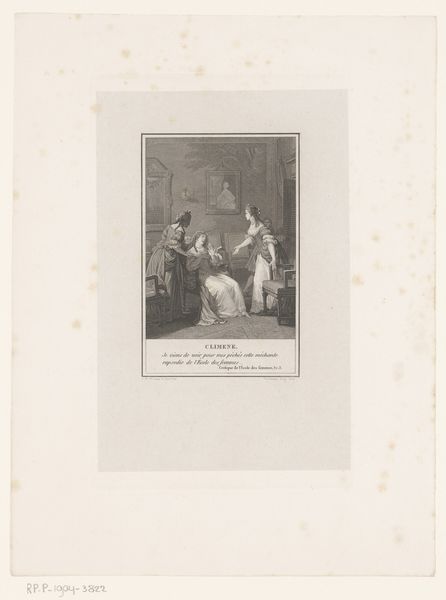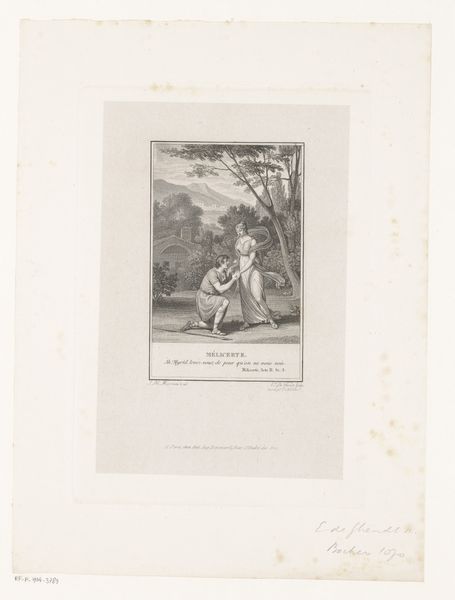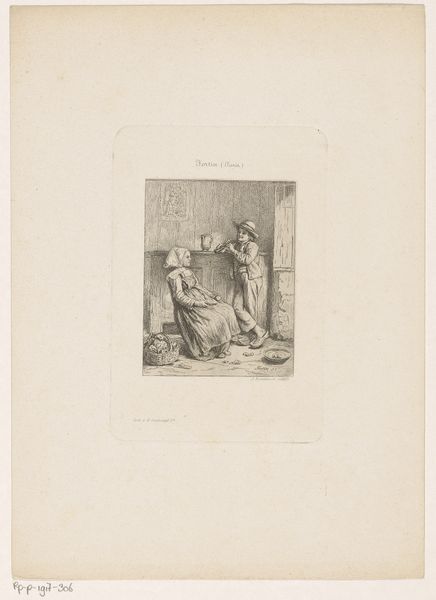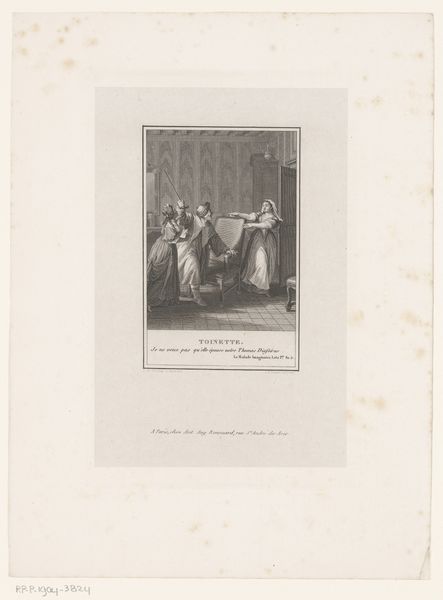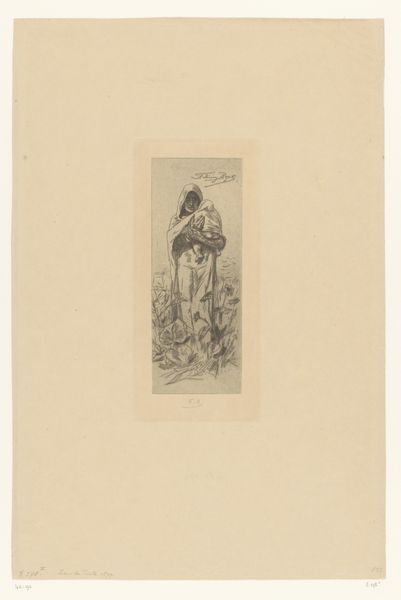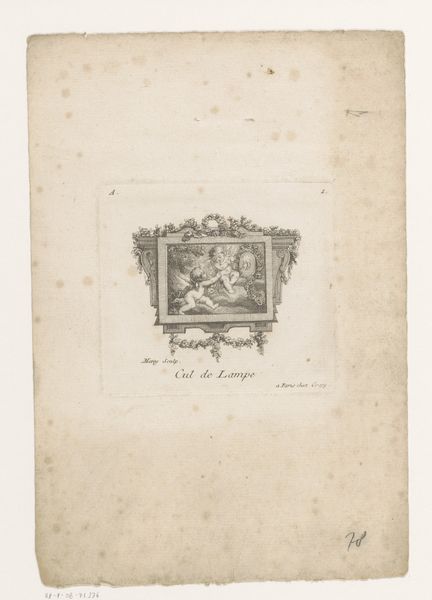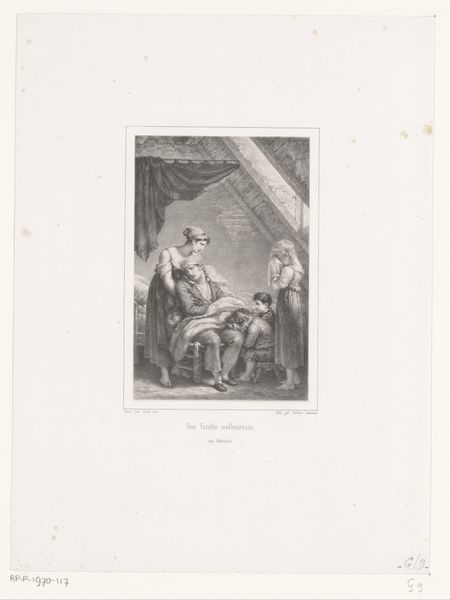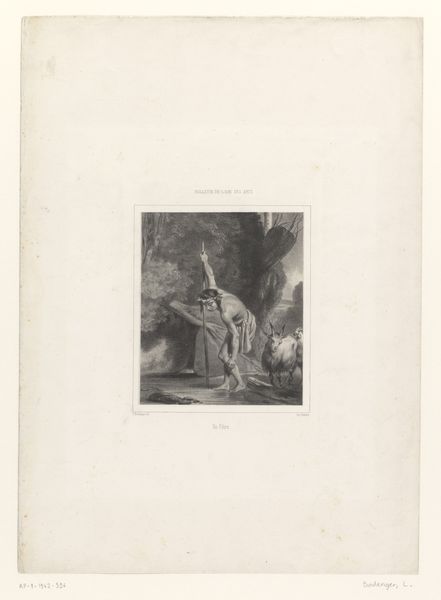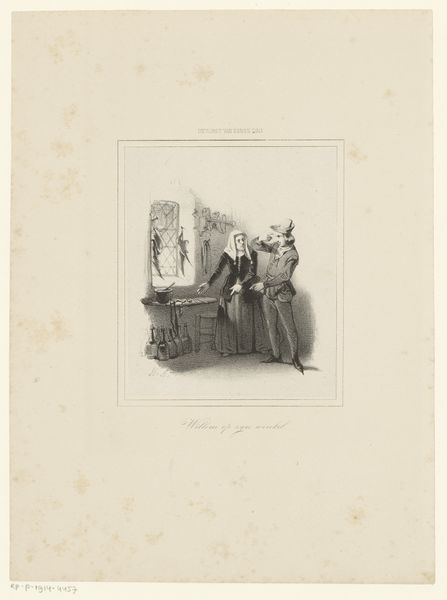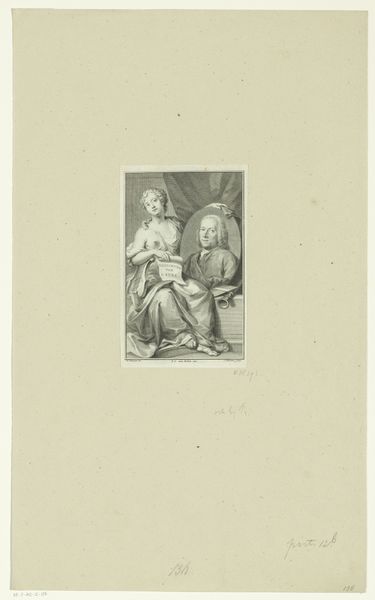
drawing, print, paper, ink
#
drawing
#
narrative-art
# print
#
figuration
#
paper
#
ink
#
romanticism
#
history-painting
#
botanical art
Dimensions: 27 × 50 mm
Copyright: Public Domain
Editor: This is "Study for a plate from The Task" by Thomas Stothard, around 1800, a drawing in ink on paper. It looks like a scene from a play. I'm curious about the context around printed images at the time; what can you tell me about the social role of this drawing and how it might have been produced for mass consumption? Curator: Given its date and purpose, we need to consider the economics of printmaking. Who would have consumed prints reproducing this image and how does the drawing relate to the broader business of book production? How do you think Stothard’s artistic labor fit into the manufacturing processes of the day? Editor: So, not necessarily the elite. These were meant for general readership, for the rising middle class and literate consumers? This was a study, so it must have been a stage in making the printing plate? Curator: Exactly. The "study" aspect is key here. It demonstrates a movement toward mass production through printed images. A study means an artisan translated the artist’s concept into a replicable commodity that circulated ideas in the marketplace. Editor: I see. This was the means to an end. Making art that's more accessible… almost democratic? How would Stothard see this type of labor? Curator: Precisely. The process reflects a democratization of art through the print medium, which in turn raises questions about authorship, skill, and access to the art market for both maker and consumer. The print relies on the skill of the engraver and printer as much as Stothard’s original vision. He's feeding an industry, if you will, making luxury goods accessible. It's no longer only about a painting for the wealthy! Editor: It gives me a different perspective appreciating both Stothard’s draftsmanship but the craft necessary for popularizing images. I guess I will now be thinking a lot more about how art reached the wider public at this period. Curator: I hope this also encourages an appreciation of both the artists' vision and the means that make the proliferation of that image possible!
Comments
No comments
Be the first to comment and join the conversation on the ultimate creative platform.
